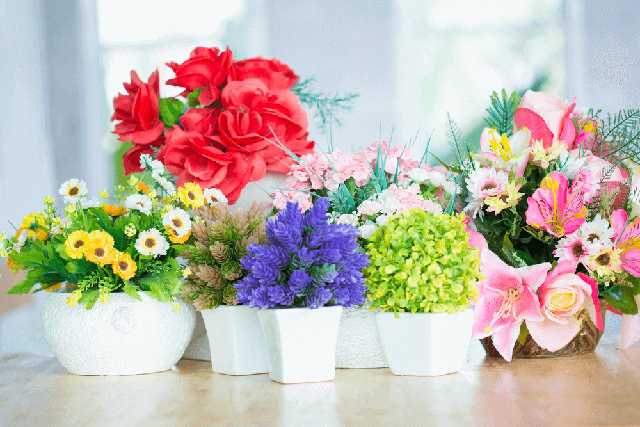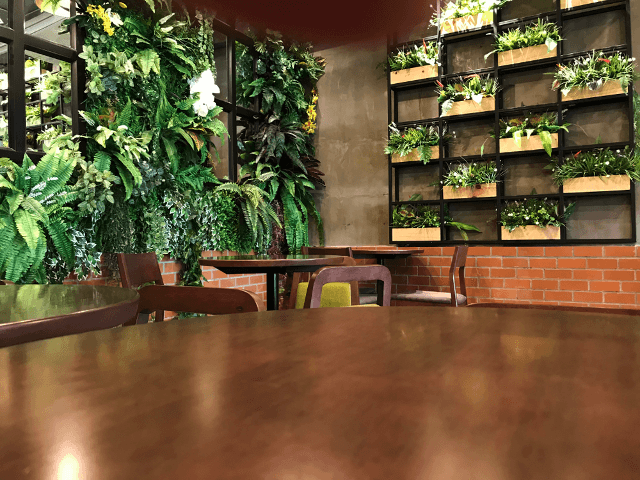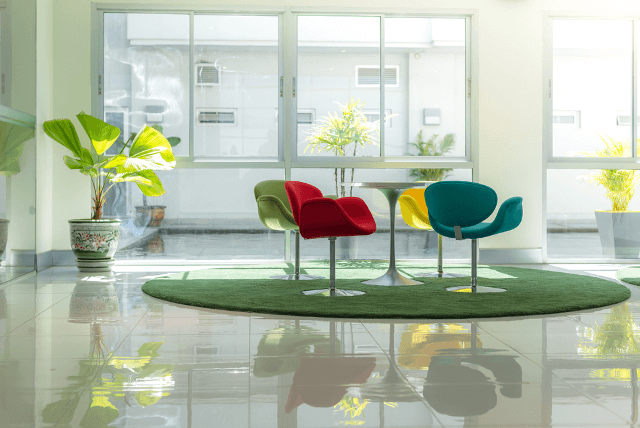Are you looking for a low-maintenance way to bring year-round greenery into your home? Artificial plants may be the perfect solution. With the growing trend of using artificial plants in home decor, many homeowners are discovering the benefits they offer. From easy upkeep to the ability to create eye-catching focal points, artificial plants have become a popular choice for adding a touch of nature to interior spaces.
When it comes to choosing the right artificial plants for your home, there are several factors to consider. From size and style to placement, finding the perfect artificial plants can help elevate the overall aesthetic of your space. Whether you’re looking to create a statement wall or add a striking centerpiece, artificial plants offer endless possibilities for enhancing your home decor.
Mixing and matching different types of artificial plants is an art form that can help create a cohesive and visually appealing arrangement. By blending various styles and sizes, you can achieve a natural and realistic look that adds beauty and charm to any room in your home. Whether you’re a seasoned decorator or new to the world of artificial plants, this guide will provide valuable tips for incorporating greenery into your living space.
Choosing the Right Artificial Plants
When it comes to choosing the right artificial plants for your home, there are several important factors to consider in order to achieve a cohesive and visually appealing decor. The size, style, and placement of these plants can play a significant role in creating the desired ambiance and aesthetic in each room. Here are some tips for selecting the best artificial plants for your home:
Considerations for Size
One of the first considerations when choosing artificial plants is their size. It’s important to select plants that are proportionate to the space they will occupy. In larger rooms, taller or more substantial plants can help fill empty corners and create vertical interest. Conversely, smaller spaces may benefit from more compact or tabletop-sized plants.
Style and Aesthetic
The style of artificial plants should complement the overall decor scheme of your home. Consider the design aesthetic you want to achieve – whether it’s modern and minimalist, traditional and classic, or bohemian and eclectic. Choose plants that align with this vision, whether it’s sleek and contemporary succulents or lush, tropical foliage.
Placement Tips
The placement of artificial plants can greatly impact the overall look and feel of a space. Consider using larger statement plants as focal points in living rooms or entryways, while smaller potted arrangements can be used to add greenery to shelves or coffee tables. In bathrooms, consider moisture-resistant options such as faux ferns or orchids.
By carefully considering these factors – size, style, and placement – you can ensure that the artificial plants you choose enhance the visual appeal of your home while adding a touch of natural beauty without any maintenance required.
Creating Focal Points
Creating eye-catching focal points with artificial plants is a great way to add visual interest and life to any room in your home. Whether you want to create a statement wall or a striking centerpiece, artificial plants offer endless possibilities for adding a touch of greenery to your space. Here are some creative ideas for using artificial plants to create focal points in various rooms:
- Create a Stunning Statement Wall: One of the most popular ways to use artificial plants as a focal point is by creating a stunning statement wall. You can achieve this by arranging an assortment of artificial plants in different sizes, shapes, and colors on a blank wall to create a unique and eye-catching display. Consider using a mix of hanging planters, wall-mounted shelves, and decorative hooks to showcase your favorite artificial plants.
- Designing a Striking Centerpiece: Another creative way to make use of artificial plants as focal points is by designing a striking centerpiece for your dining table, coffee table, or mantelpiece. Choose a variety of artificial plants with different textures and heights to create an interesting visual composition. Add some decorative elements such as candles, stones, or glass vases to enhance the look and feel of the centerpiece.
- Incorporating Artificial Plants into Nooks and Corners: Don’t overlook small nooks and corners when looking for opportunities to create focal points with artificial plants. A neglected corner or alcove can be transformed into a cozy reading nook or meditation space with the addition of an artificial plant arrangement. Consider placing tall potted plants next to a comfortable chair or bench to create a serene and inviting atmosphere.
By using these creative ideas for creating focal points with artificial plants, you can transform any room in your home into a vibrant and visually pleasing space that reflects your personal style and aesthetic preferences. With careful consideration of size, style, placement, and complementary decor elements, you can achieve an impressive result that’s sure to impress your family and friends.
Mixing and Matching
When it comes to decorating with artificial plants, mastering the art of mixing and matching different types of plants is essential for creating a cohesive and visually appealing arrangement. By carefully combining various sizes, styles, and textures, you can achieve a natural and vibrant look that enhances the overall aesthetic of your home.
Considerations for Mixing and Matching
When selecting artificial plants to mix and match, consider the overall style and theme of your home decor. Whether you prefer modern minimalism or cozy farmhouse chic, choose plants that complement the existing design elements in your space. Additionally, take into account the size and scale of the plants to ensure they fit harmoniously within their designated areas.
Creating Visual Interest
To create visual interest when mixing and matching artificial plants, consider incorporating a variety of plant types such as succulents, ferns, flowers, and leafy greens. By combining different shapes and colors, you can add depth and dimension to your arrangement. Experiment with placing taller plants at the back for height, while using smaller plants in the front to create layers.
Achieving Cohesiveness
While it’s important to mix various plant types together, it’s also crucial to maintain cohesiveness within your arrangement. Stick to a consistent color palette or theme to ensure that the different plants work together harmoniously. Consider using planters or pots in similar materials or finishes to tie everything together seamlessly.
By mastering the art of mixing and matching artificial plants in your home decor, you can create beautiful arrangements that enhance the ambiance of any space while minimizing maintenance efforts. Whether you’re aiming for a lush jungle vibe or a clean and modern look, judicious selections will result in eye-catching focal points throughout your home that will be appreciated by all who enter.
DIY Potting and Planters
Creating a natural and realistic look with artificial plants involves careful consideration of the type of planters and pots you choose to display them in. The right planter can enhance the overall effect of the artificial plant, adding an extra layer of authenticity to the display. Here, we will discuss different types of planters and offer a step-by-step guide on how to pot and style artificial plants for maximum visual impact.
When selecting a planter for your artificial plants, consider the aesthetic of your home and the style of the room where the plant will be placed. For a sleek, modern look, opt for minimalist designs such as simple white or black ceramic pots. If you prefer a more rustic or bohemian vibe, woven baskets or weathered terracotta pots can add charm and character to the space.
Once you have chosen your planters, it’s important to select the right artificial plants that complement them. Consider factors such as size, color, and texture – an oversized fern may look stunning in a large floor planter, while a collection of small succulents may be more suitable for smaller tabletop pots. If you’re aiming for a natural look, mix different types or sizes of artificial plants within one planter to mimic the variety found in nature.
Properly potting artificial plants is crucial in achieving a natural and realistic appearance. Avoid overcrowding by giving each plant enough space to stand out and shine on its own. Additionally, consider using decorative stones or moss to cover the base of the plants; this not only adds a finishing touch but also helps anchor them securely in place.
| Planters | Recommended Artificial Plants |
|---|---|
| Ceramic Pots | Fiddle Leaf Fig Tree |
| Woven Baskets | Hanging Pothos Plant |
| Terracotta Pots | Succulent Arrangements |
Incorporating Greenery in Different Spaces
Artificial plants are a fantastic way to bring greenery into a variety of spaces within your home. Whether you’re looking to add a touch of nature to your living room, bedroom, kitchen, or bathroom, there are plenty of creative and stylish ways to incorporate artificial plants into these areas.
In the living room, large artificial plants can make a bold statement and create a sense of coziness. Consider placing a tall fiddle leaf fig tree in a corner or grouping different-sized potted plants on a side table or shelf. You can also use artificial hanging plants to add visual interest and draw the eye upward.
When it comes to the bedroom, artificial plants can contribute to creating a calming and serene atmosphere. A small potted plant on the nightstand or dresser can add a subtle touch of greenery without taking up too much space. You could also consider using artificial flowers and vines to decorate the headboard or frame a mirror.
In the kitchen and bathroom, it’s important to choose artificial plants that can withstand humidity and heat. Succulents and cacti are great options for these areas as they require minimal maintenance and provide a fresh, modern look. Hang artificial ivy or other trailing plants from open shelves in the kitchen or place them on floating shelves in the bathroom for an added touch of greenery.
Overall, how to decorate your home with artificial plants is all about getting creative and finding ways to bring nature indoors in different ways that fit each space’s unique style and needs.
| Space | Artificial Plant Suggestions |
|---|---|
| Living room | Tall fiddle leaf fig tree, grouping of potted plants, hanging plants |
| Bedroom | Small potted plant on nightstand or dresser, artificial flowers/vines for headboard/mirror decoration |
| Kitchen/Bathroom | Succulents, cacti, hanging/trailing plants for open/floating shelves |
Maintenance and Care
Artificial plants are a popular choice for home decor due to their low maintenance and year-round greenery. However, to keep them looking fresh and vibrant, it’s important to properly maintain and care for them. Here are some tips for keeping your artificial plants in top condition:
1. Regular Dusting: Just like real plants, artificial plants can accumulate dust over time. To keep them looking clean and vibrant, make sure to dust them regularly. You can use a soft cloth or duster to gently wipe down the leaves and stems of the plants.
2. Cleaning Techniques: In addition to dusting, it’s also a good idea to give your artificial plants a thorough cleaning from time to time. You can use a mild soap and water solution to gently clean the leaves and remove any built-up dirt or grime. Be sure to allow the plants to dry completely before putting them back in their designated spaces.
3. Avoid Direct Sunlight: While artificial plants don’t require sunlight like real plants do, prolonged exposure to direct sunlight can cause their colors to fade over time. To keep them looking vibrant, it’s best to place them away from direct sunlight or use UV-resistant sprays to protect them from the sun’s rays.
By following these maintenance and care tips, you can ensure that your artificial plants continue to enhance the beauty of your home for years to come.
The Final Touch
In conclusion, artificial plants offer a practical and versatile way to enhance the ambiance of any space in your home. By incorporating artificial greenery into your overall decor scheme, you can bring a touch of nature indoors without the maintenance and care required by real plants.
The key is to choose the right artificial plants that complement your home’s style and layout, and then use them strategically to create eye-catching focal points while maintaining a cohesive and visually appealing arrangement throughout the space.
One way to incorporate artificial plants into your decor scheme is by using them to add color, texture, and dimension to various rooms. For example, you can use tall artificial plants to fill empty corners or create height in a room, or group smaller plants together on shelves or side tables for a more intimate feel. Additionally, consider mixing different types of artificial plants to achieve a natural and realistic look that adds depth and visual interest to your decor.
Furthermore, don’t overlook the impact that well-potted and styled artificial plants can have on elevating the overall ambiance of a space. By following DIY potting techniques and choosing stylish planters, you can seamlessly integrate artificial greenery into your home decor while ensuring that it looks fresh and vibrant all year round.
With some creativity and attention to detail, you can easily transform your living spaces with the beauty of artificial plants. And as this article has shown, with some basic guidance on choosing, styling, and maintaining artificial plants in your home you will not only be enhancing each room aesthetically but also reaping their benefits practically.

I’m thrilled to be your companion on this exciting journey through the world of home decor and design. With a passion for turning houses into homes and a keen eye for the finer details, I’m here to help you transform your living spaces into beautiful, functional, and meaningful havens.





